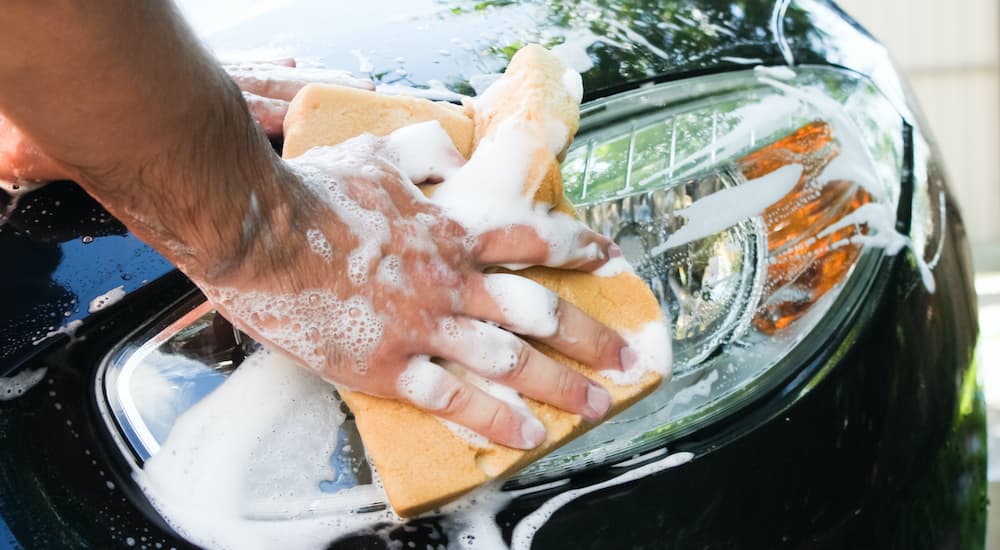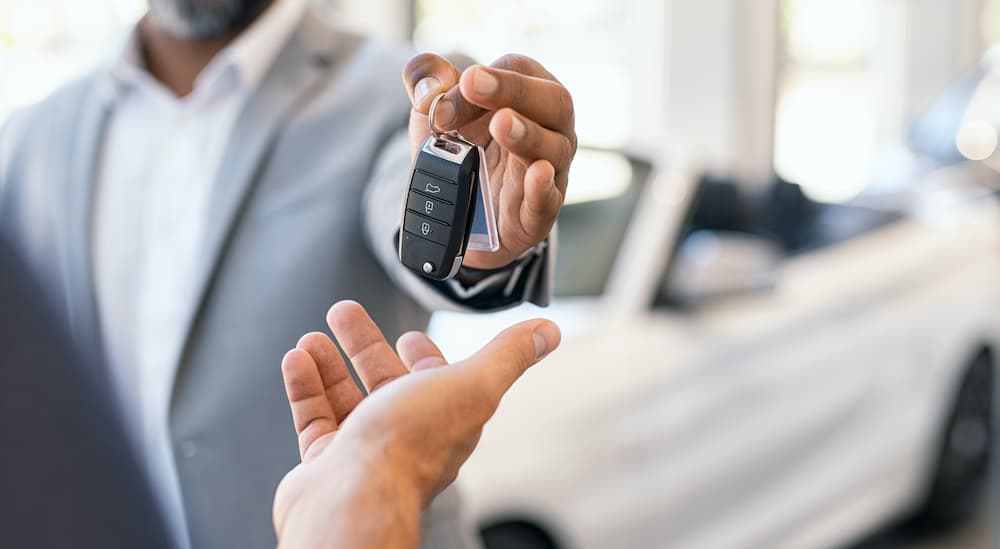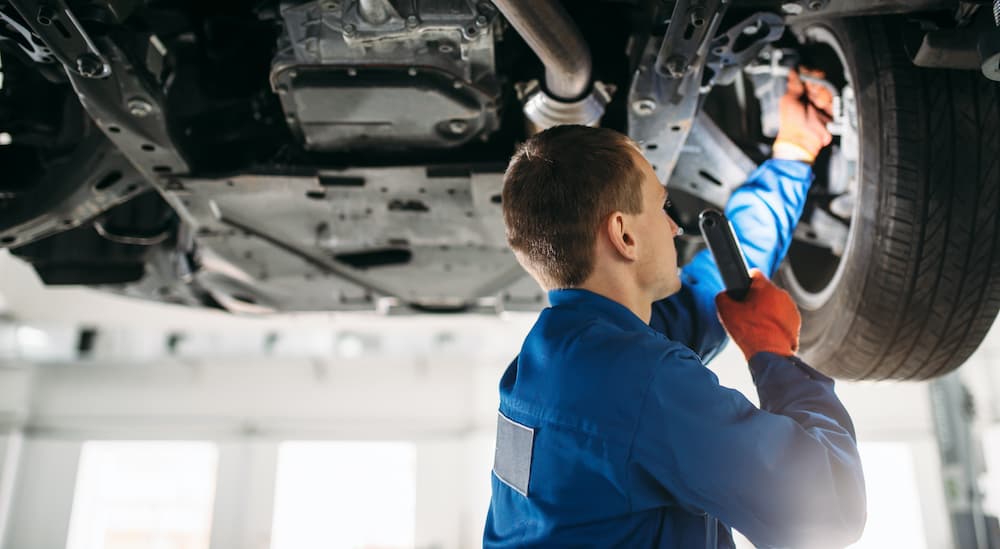Part of staying involved with car culture means trading in or trading up your old ride if you don’t have plans on storing it for posterity’s sake. No one has infinite garage space, and if you either decide to upgrade to something better or it’s time to trade in the muscle car for a minivan (or maybe you can compromise with your significant other and go for a crossover or SUV), you want to make sure you’re getting the best deal available for your trade-in. So let’s talk about trading in your vehicle; whether it be new, old, or still under warranty, there are a few ways to maximize the value when you tell yourself, “it’s time to sell my car” and get something else. So how do you get the most for your trade-in?
Wash Your Car
It doesn’t seem like much, but one of the best ways to get the most value from selling your car or trading it in is washing it. Why? Because appearances can make all the difference in the world. Just because you have a new generation popular marque and you trade it in doesn’t mean you’ll get top dollar for it if you bring it in all dirty and shabby looking.
Judging a book by its cover does apply for trading in or selling your vehicle, even in private sales. Think about it, if you were looking to buy a specific car and you opened up the listing page and saw a dirty vehicle with mud stains or snow all over it, would you really feel inclined to pay the asking price? You might feel more persuaded to haggle the price down to something seemingly more reasonable. Well, reverse the situation, and you can see how a dealer, seller, or auctioneer might attempt to do the same if you bring a dirty vehicle onto their lot. This is why it’s important to give your vehicle a good washing beforehand, so it looks like it’s worth as much as you’re asking for, or maybe even more.

Clean Out Your Car
In the exact same way that washing your car is important for maintaining its value, cleaning out the car is equally as important. Imagine you see a gorgeous-looking vehicle in the listing, but then photos of the interior emerge, and you see that the fabric is torn, there’s junk all on the floor, stains across the dashboard, and a filthy windshield? You probably wouldn’t think very highly of that listing, even if the exterior looked good.
Well, if you want to get the most back for your vehicle, it’s important to put a little bit of tender love and care into cleaning out the interior as much as you put into cleaning up and washing down the exterior. A clean interior can help raise the potential trade-in value. This rings especially true if all the components are intact, there is no damage to the seating material, and all the compartments, pouches, and storage areas are clean and pristine.
Keep as Much of the Original Equipment as Possible
This may not seem like the most important thing you could do to raise the value of the trade-in, but it actually does go a really long way in adding value to what you get back if you decide to sell your car. Maintaining the original equipment for your vehicle means that it’s as close to how you bought it off the dealer’s lot as you can get. If you bought it used and it didn’t come with all of the original equipment, it’s no big deal.
However, if you can find the original owner’s manual, you have all of the original key fobs, remotes, mats, coverings, spare tire, tools, and any other accessories that came with the vehicle, then it can definitely help raise the trade-in value. The more you have from the original purchase, the better. Even if it’s an older vehicle, the value will be measured against both the mileage and the condition. You can’t help whatever is on the odometer, but you can do your part in making sure the vehicle looks as good as possible, and all the equipment is in order.
Make Sure the Vehicle Components Are in Working Order
A functioning vehicle is a valuable vehicle. What good are a nice paint job, a fresh wash, and a clean interior if it doesn’t work? One of the most important things you can do is make sure that the vehicle starts up, you can drive it, you can park it, you can reverse it, and you can turn it off without any problems. This will certainly help raise the value by a significant margin.
Be sure to check the glove box; can you open and close it? Do the vanity mirrors work? Do all of the dashboard cluster dials, knobs, buttons, and touchscreen tabs still function as intended? Can you turn on and off the blinkers, the turn signals, the headlights, and the high beams? Do the brake lights work? Are all the interior lights functioning as they should?
How about the comfort and infotainment features?
If the vehicle comes with power driver or passenger seats, can you still adjust them to the full extent as you could when you purchased the vehicle? Can you still pair up smart devices if the function was available when you bought the car, truck, or SUV from the dealer/seller/auction? Are all the speakers still working? Yes? Well, you’re looking at the maximum value for selling your car. Combine all the interior amenities with a properly working engine and transmission, along with properly aligned wheels, steering column, and functioning suspension, and it all adds to what you could get when it’s time to trade-in or sell your car.
Resolve All Unpaid Debts/Liens/Loans
If you’re still paying for your vehicle while thinking about selling it or trading it in, it could pose problems for you. If you attempt a private sale while there are still outstanding charges owed, you may have to jump through hoops to get all of that sorted. You obviously won’t be getting top dollar for the trade-in or sale in that case.
Sometimes you can get the liens, loans, or debts resolved by trading in or selling your vehicle to a dealership. Their finance departments can sometimes handle all of those issues for you if you still have the original paperwork, registration, or bill of sale. The finance department may contact the bank or lien issuer and pay the difference. However, whatever is paid in the difference would come out of the value of the trade-in of your vehicle, and depending on how much you owe, could end up setting you back a pretty penny, or with no pennies from the trade-in at all. That’s why it’s usually best that if you have any outstanding payments due on the vehicle, you pay them off as soon as possible before trading in or selling your car.
Get the Vehicle Inspected Beforehand
While it might behoove you to do an inspection of your vehicle before you sell your car, sometimes some people just aren’t very good at spotting some of the minor or serious issues with a vehicle. In cases where you’re not sure what you’re looking for, and you’ve already washed your car, cleaned it up, and ensured that it works properly, sometimes having a third-party assessment can help. Now, this is a double-edged sword because paying to have someone inspect the vehicle can definitely eat into what you could otherwise get back from trading the vehicle in. However, an inspection can also reveal some issues that you may need to address, which could end up raising the value of the vehicle if you do get those issues addressed.
Ultimately, an inspection from a certified mechanic or dealer can help or hinder your chances of getting the most value out of your trade-in. This is an executive decision you’ll have to gauge on your own and determine what the best course of action is. If you’re not entirely familiar with inspecting vehicles or don’t know your way around under the hood, it might be best to have someone else inspect it for you. Otherwise, if you have a good enough understanding of what you need to be inspecting, go ahead and do the due diligence and then see what sort of value you get out of the vehicle during the trade-in process.





